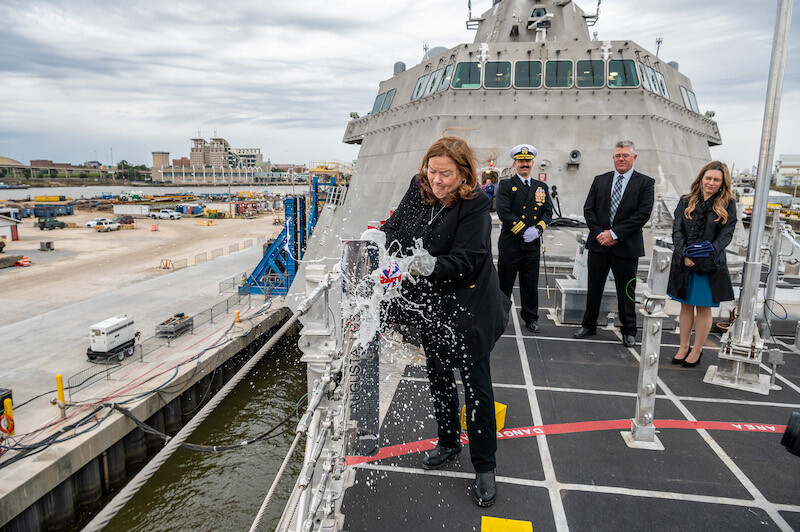Austal USA christened the USS Augusta (LCS 34), an Independence-variant littoral combat ship, at a ceremony in December at the company’s Mobile, Ala., shipyard. The Augusta is the 17th LCS designed and constructed by Austal USA.
The 421'6"x103.7' Independence-variant LCS is the most recent step in the small surface combatant evolution. A high-speed, agile, shallow draft, focused-mission surface combatant, the LCS is designed to conduct surface warfare, anti-submarine warfare, and mine countermeasures missions in the littoral near-shore region, while also possessing the capability for deep-water operations. With its open-architecture design, the LCS can support modular weapons, sensor systems and a variety of manned and unmanned vehicles.
Each aluminum trimaran LCS has a displacement of 3,200 MT, a 15.1′ draft and is powered by a pair of 12,200-hp MTU 20V8000 diesel engines and two 29,500-hp GE LM2500 gas turbines.
“Building these ships is not easy. It takes thousands of the world’s best shipbuilders here at Austal USA, along with a robust supplier network, a strong partnership with our elected officials, and the cooperation and support of our Navy teammates,” Austal USA President Rusty Murdaugh said in a statement. “I am proud of our team for pulling together to achieve our common goal of efficiently delivering state-of-the-art surface combatants to the Navy on budget and on schedule.”
Independence-variant Littoral Combat Ships are fast, optimally-manned, mission-tailored surface combatants that operate in near-shore and open-ocean environments, winning against 21st-century coastal threats.
LCS 34 is the second Navy vessel to be named Augusta in honor of the Maine state capital, the first being a Los Angeles-class nuclear attack submarine decommissioned in 2009. Maine has one of the highest per capita concentrations of veterans in the U.S. and boasts a long history of shipbuilding.
Augusta is planned for delivery in early 2023 and will be homeported in San Diego where Austal USA will have the capability to drydock and provide lifecycle sustainment support for the Independence-variant ship class and other similar sized ships at its waterfront repair facility.




